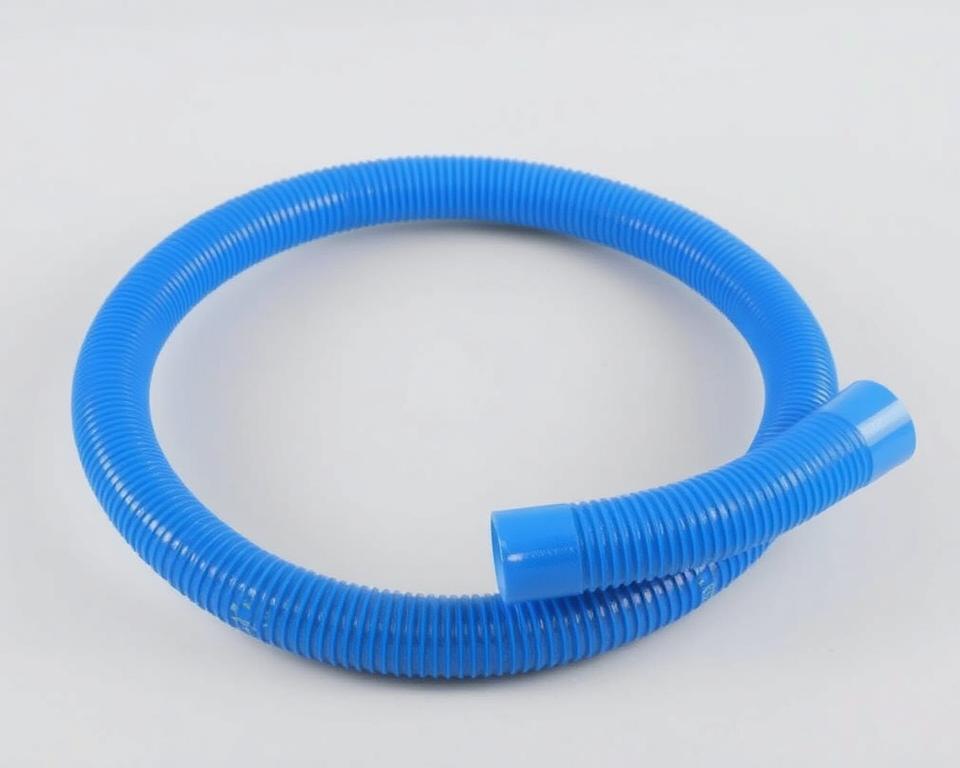PVC Pipe for Air Compressor Lines: Your Complete Guide
A burst compressed air line can discharge energy comparable to a stick of dynamite—did you know? Many facilities still use piping systems made from risky materials, unaware of the dangers. This guide explains why safety should come first when using PVC for air lines.
Although some plastics gain popularity, OSHA flatly forbids their above-ground application. Repeated contact with compressor oil and thermal cycling makes them brittle, causing explosive failures. Those so-called safe pressure limits don’t eliminate explosion risk.
Turn to Installation Parts Supply for sturdy aluminum systems. Using approved materials saves you from fines and enhances safety. Let’s explore how to build a safer system.

Significant Notes
- Explosion danger leads OSHA to outlaw some pipe materials.
- Heat and cold swings slashes claimed pressure capacity.
- Material becomes brittle with age, upping rupture chances.
- Switching to aluminum vastly improves safety.
- Proper investment prevents costly fines and accidents.
Why You Shouldn’t Use PVC for Compressed Air
Manufacturers explicitly warn against using some plastics for high-energy applications. Compressed air carries destructive energy; a burst is like a dynamite blast. This makes material choice critical for safety.
- Brittleness: Cold snaps make pipe walls brittle and prone to cracking.
- Adhesive failures: Temperature changes and oils cause adhesive joints to fail.
- Misleading ratings: Ratings halve by 110°F, a common shop temperature.
OSHA cites a $110,000 fine after a facility’s piping shattered, injuring workers. Don’t forget, compression heat cuts into rated safety margins.
“Above-ground use of certain plastics for compressed air violates OSHA standards due to explosion risks.”
Metal alternatives fail more predictably, bending rather than fragmenting. Plastic shrapnel from explosive failures can travel over 50 feet, embedding in walls or equipment.
Workshops face daily temperature fluctuations that accelerate material degradation. Over 10 years, UV exposure and chemical interactions further compromise integrity, turning minor leaks into major hazards.
Safe Alternatives to PVC Pipe for Air Compressor Lines
Aluminum piping systems outperform traditional options in both safety and efficiency. Black pipe vs. aluminum: aluminum wins with 90% fewer leaks. Their lightweight design and corrosion resistance make them ideal for long-term use.
Modular aluminum setups save time—no threading required. Installation Parts Supply stocks ready-to-snap aluminum modules. A car plant saw a 40% drop in labor expenses after aluminum installation.
- Copper: Ideal in sterile environments for its germ-killing copper surface. Requires soldering expertise.
- Stainless Steel: Resists rust in humid areas like coastal workshops.
- ABS/HDPE: Chemical-resistant for labs and factories handling solvents.
“Our aluminum retrofit reduced energy waste by 15%—paying for itself in 18 months.”
Proper torque is critical. Too tight splits fittings; too loose lets air escape. Stick to recommended 25–30 ft-lb torque for aluminum.
For food-grade applications, NSF-certified options ensure air purity. Choose pipe rated for your specific operating environment.
How to Choose the Right Piping Material for Your Needs
Selecting the best material for your setup requires balancing cost, safety, and efficiency. One plant slashed $12k per year by adopting aluminum lines. Here’s how to make the right choice.
| Material | Cost (per ft) | Maintenance | ROI Time |
|---|---|---|---|
| Aluminum | $8.50 | Low | 18 months |
| Black Pipe | $5.00 | High | N/A |
| Copper | $10.20 | Medium | 24 months |
Watch your operating temperatures. Plastics fail under 32°F; aluminum works from -40°F to 200°F. For chemical-heavy environments, stainless steel resists solvents.
Pro Tip: Calculate ROI using CFM loss formulas. A 10% leak in a 50 HP system wastes $3,500 yearly.
- Ensure your pipe PSI rating exceeds system pressure.
- Verify your system meets OSHA welding and pressure-test rules.
- Contact Installation Parts Supply for a no-cost audit.
“Our aluminum retrofit cut energy waste by 15%—paying for itself in 18 months.”
DIY installations work for small shops, but professionals ensure leak-free joints. Check warranties—some pipes include decade-long coverage.
In Summary
Choosing the right materials for your compressed air setup isn’t just about cost—it’s about safety. Ninety-two percent of pipe failures occur in aging lines, frequently causing injuries. Pick aluminum for near-perfect reliability.
Don’t forget:
- Avoid brittle materials that shatter under pressure.
- Choose rust-proof metals over plastics.
- Failing to comply can cost you big in fines and claims.
Upgrade now and secure your workplace. Installation Parts Supply provides same-day quotes and limited-time discounts on starter kits. Download our free maintenance template or call for emergency replacements.
Commit to safer piping today—your team’s safety depends on it.